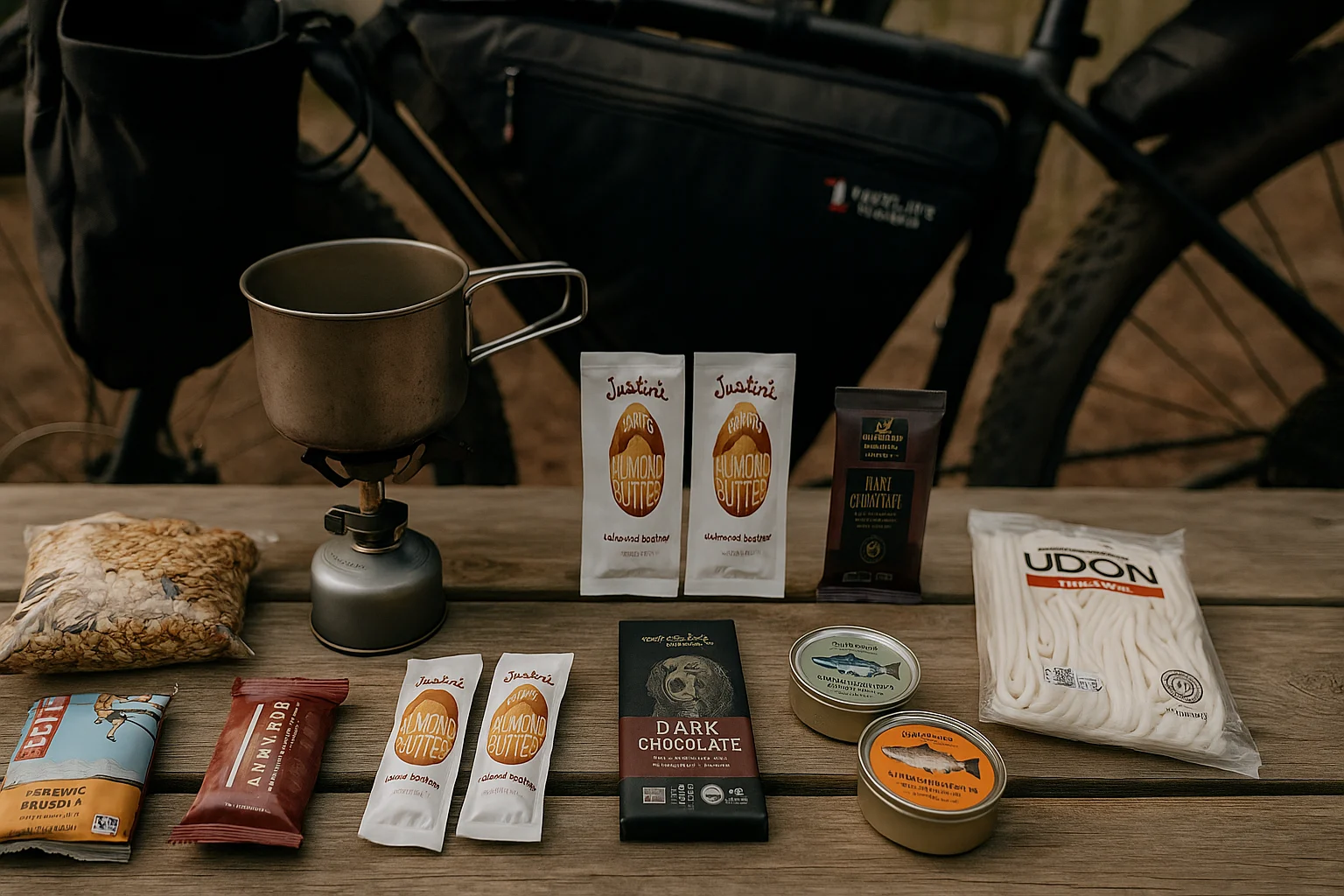Note: This page is a legacy archive honoring Glenn Charles’s contributions, as featured in Bikepacking.com’s foodpacking roundup. It is not an impersonation but a tribute to his impact, preserved by The Traveling Vagabond. Last updated: July 1, 2025.
Glenn Charles’s Foodpacking Strategy: Minimalist Meals for the Trail
Glenn Charles, a bikepacking pioneer and Jupiter’s Traveller Recipient, crafted a foodpacking strategy that embodied his minimalist ethos. Featured in Glenn’s original foodpacking profile on Bikepacking.com alongside riders like Eszter Horyani and Joe Cruz, Glenn’s 3-day bikepacking meal strategy inspired my lightweight setups. His approach, preserved by The Traveling Vagabond, emphasized intentional living, using high-calorie foods and compact cooking gear to fuel epic rides like the Kokopelli Trail.
Glenn’s 3-Day Bikepacking Meal Plan
Glenn’s foodpacking strategy prioritized calorie-dense, quick-cooking foods to sustain long rides while keeping his bike agile. His 3-day meal plan, detailed in Bikepacking.com’s foodpacking roundup, included:
TL;DR: Glenn Charles’s foodpacking strategy features high-calorie snacks (granola, Justin’s almond butter), fast-cook dinners (Udon noodles, Patagonia salmon), and a Snow Peak stove. Food was stored in feedbags, framebags, and seat bags for balance. Details below, with insights from our minimalist cooking gear.
- Breakfast (500-800 calories): Organic granola with Justin’s almond butter and locally roasted coffee, hand-ground and dripped through a Snow Peak pour-over. A Lara bar added quick energy before breaking camp.
- Lunch (600-800 calories): No-cook items like hummus, sliced apples, cheddar cheese, hard sausage, and crushed Pringles, eaten on the trail to save time and fuel.
- Dinner (~1000 calories): Udon noodles or Patagonia’s sustainable salmon and their Tsampa soup mix with olive oil, cheese, cooked quickly using a pot cozy for efficiency.
- Snacks (variable calories): Organic GORP, Lara bars, shot blocks, and dark chocolate or Justin’s Peanut Butter Cups, consumed hourly for sustained energy.
Unlike Eszter Horyani’s mac and cheese or Joe Cruz’s couscous with whiskey, Glenn’s nutrient-rich, sustainable choices like Patagonia Provisions reflected his commitment to quality and minimalism. His day-one fresh items, like avocados, set him apart. Explore his trail experiences in our bikepacking story archive.
Cooking and Storage: A Minimalist System
Glenn’s cooking setup evolved from a Trangia alcohol stove to a Snow Peak canister stove with a titanium pot kit, chosen for its lighter weight and faster boiling. Glenn was quoted in Bikepacking.com’s original foodpacking roundup saying he preferred speed when cooking: “I just want to eat or drink coffee as quickly as possible.” His pot cozy technique—allowing noodles to cook off-flame—saved fuel, a hack I’ve adopted for bikepacking. Food was stored strategically: snacks in feedbags and framebag map pockets, fresh items like avocados in a Porcelain Rocket sling or Carradice bag, and bulk meals in a seat bag for bike balance. His hydration strategy used 4 liters of water daily, carried in fork-mounted bottles and a 64-ounce Klean Kanteen on his fatbike’s downtube, treated with two-part chemicals or boiling. For more on safe food handling in the backcountry, see the USDA Forest Service’s backcountry food safety guidelines. See Glenn’s gear setup in our Glenn’s full packing guide.

Influence on Modern Bikepacking
Glenn’s foodpacking strategy shaped modern bikepacking by proving minimalist meals could fuel demanding rides without compromising nutrition. His use of ready-to-eat Tsampa and protein-rich salmon by Patagonia introduced sustainable options, while his Snow Peak stove inspired lightweight cooking innovations. Unlike Brendan Collier’s sushi rice or Donnie Kolb’s ramen, Glenn’s quick-cooking, nutrient-rich foods resonated with ultralight enthusiasts. His hourly eating approach and early use of fresh ingredients taught me to balance efficiency and enjoyment. His legacy continues to inspire today’s bikepackers—learn more in the Legacy Archive.
Frequently Asked Questions About Glenn’s Foodpacking Strategy
Glenn’s bikepacking meal strategy fuels my passion for minimalist adventure cycling. Here are answers to help you apply his foodpacking approach.
What foods did Glenn Charles pack for bikepacking?
Glenn packed high-calorie, low-weight foods like organic granola, Justin’s almond butter, Udon noodles, Patagonia Provisions salmon, and Tsampa soup for 3-day bikepacking trips. His meal strategy, shared in Bikepacking.com’s foodpacking roundup, prioritized quick-cooking, nutrient-rich options. Explore more in Glenn’s trip logs and stories.
How did Glenn Charles cook on bikepacking trips?
Glenn evolved from a Trangia alcohol stove to a Snow Peak canister stove with a titanium pot kit, using a pot cozy to save fuel. His approach, noted in Bikepacking.com’s food strategy feature, focused on fast boiling for coffee and dinners. Check out his stove system and cookware breakdown.
Where did Glenn Charles store his food?
Glenn stored snacks in feedbags and framebag map pockets, fresh items in a Porcelain Rocket sling, and bulk meals in a seat bag. His foodpacking strategy, shared in Bikepacking.com’s food strategy feature, kept his bike balanced. See more in Glenn’s kit configuration for food storage.
How did Glenn’s foodpacking influence bikepacking?
Glenn’s minimalist foodpacking, featuring Patagonia Provisions and a Snow Peak stove, inspired ultralight bikepacking meal planning. His approach, highlighted in Bikepacking.com’s food strategy feature, showed how simple, high-calorie meals fueled epic rides.